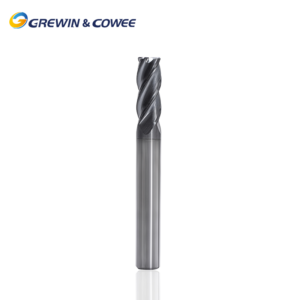Table of Contents
ToggleCarbide End Mill
When it comes to machining, the tools you choose can significantly influence both the quality of your work and your overall efficiency. One such tool that stands out in the machining industry is the carbide end mill. Recognized for their precision and durability, carbide end mills are essential for achieving flawless finishes and exact dimensions. But how do you decide which type is right for your specific needs? In this article, we will delve into the factors that should guide your selection process and highlight the benefits of carbide end mills in various applications.
Understanding Carbide End Mills
Carbide end mills are cutting tools made from tungsten carbide, a material known for its hardness and wear resistance. Unlike high-speed steel tools, carbide end mills can cut through tougher materials with ease and are less likely to dull over time. This characteristic makes them a favored choice in industries like aerospace, automotive, and manufacturing.
Imagine a machine shop working on aerospace components that require tight tolerances and minimal surface finish. Using carbide end mills allows the machinist to achieve precision cuts, thereby reducing the likelihood of defects. This not only saves time but also lowers costs related to rework and scrap.
Types of Carbide End Mills
When selecting a carbide end mill, it’s essential to consider the various types available:
1. Square End Mills: Ideal for precision work, square end mills feature a flat bottom that allows for accurate corner finishing. They are versatile and can be used for a variety of applications, including slotting and pocketing.
2. Ball Nose End Mills: Best for curved surfaces and complex shapes, ball nose end mills have a rounded tip that can create smooth, contoured edges. They are particularly useful in 3D machining, especially when creating molds.
3. Corner Radius End Mills: These have a small radius on the corners, combining the benefits of square and ball nose end mills. They are ideal for finishing cuts and can withstand higher speeds.
4. Specialty End Mills: For specific applications, such as finishing a particular material like aluminum or titanium, specialty carbide end mills are designed with unique geometries.
For example, if a company focuses on creating intricate mold designs for plastic products, they might opt for ball nose end mills for detailed work. Conversely, if their focus shifts to metal fabrication, square end mills may become their go-to choice for clean, precise cuts.
Factors to Consider When Choosing a Carbide End Mill
1. Material Compatibility
The first step in selecting a carbide end mill is understanding the material you will be working with. Carpenter materials such as steel, aluminum, or exotic alloys require different types of end mills. For instance, if you’re machining titanium, a specialized carbide end mill designed for that particular alloy will enhance tool life and performance.
2. End Mill Diameter
The diameter of the carbide end mill plays a significant role in the machining process. A smaller diameter end mill is suitable for tight, intricate work and applications that require fine details, while larger diameters are better for bulk removal of material. For example, a shop needing to machine a large flat surface might choose a larger diameter square end mill to efficiently remove materials, whereas detailed engravings would necessitate a smaller diameter ball nose end mill.
3. Flute Count
Flute count affects the type of cut and the finish you can achieve. End mills with fewer flutes (like two or three) excel at removing material quickly, making them suitable for roughing operations. In contrast, end mills with more flutes (four or more) provide a smoother finish but may remove material at a slower rate. Choosing the right flute count is crucial; for example, an aerospace manufacturer may require a higher flute count for detailed work, while a structural steel fabricator may prioritize chip removal.
4. Coating
Coatings can significantly enhance the performance of carbide end mills. Common coatings include TiN (Titanium Nitride), TiAlN (Titanium Aluminum Nitride), and even diamond coatings for specific applications. The right coating can improve tool life, decrease friction, and resistance to wear. For machining non-ferrous materials, a TiN coating may provide the necessary lubricity and prolong tool life.
Product Benefits and Application Areas
Carbide end mills offer several advantages for customers seeking reliable machining solutions:
Durability: Their ability to withstand high temperatures and resist wear means that carbide end mills can operate efficiently for extended periods. This durability translates to cost savings over time, as businesses spend less on tool replacements.
Precision: Because these tools maintain their cutting edges longer, they ensure consistent and precise results, which is critical in high-stakes fields like aerospace and medical device manufacturing.
Versatility: Carbide end mills can be used on a wide range of materials, making them suitable for various industries. Whether it’s for creating molds in plastics or for heavy-duty machining in metals, they adapt to the task at hand.
Efficiency: The combination of high cutting speed and durability means that operations can be completed quicker, enhancing overall productivity in the manufacturing process.
When customers consider purchasing carbide end mills, they usually look for tools that can handle their specific material needs without constant replacement—a crucial aspect that speaks to the long-term savings associated with these tools.
Conclusion
Selecting the right carbide end mill for your machining needs is vital for both productivity and quality. By understanding the types, materials, and specifications that influencers like material compatibility and flute count, you can make a more informed decision that aligns with your unique requirements.
With their durability, precision, versatility, and efficiency, carbide end mills are invaluable assets across various industries. As you embark on your machining journey, keep in mind the benefits of choosing the right end mill. Your investment in quality tools can significantly impact the efficacy of your operations. Embrace the potential of carbide end mills to elevate your craftsmanship and operational excellence.
